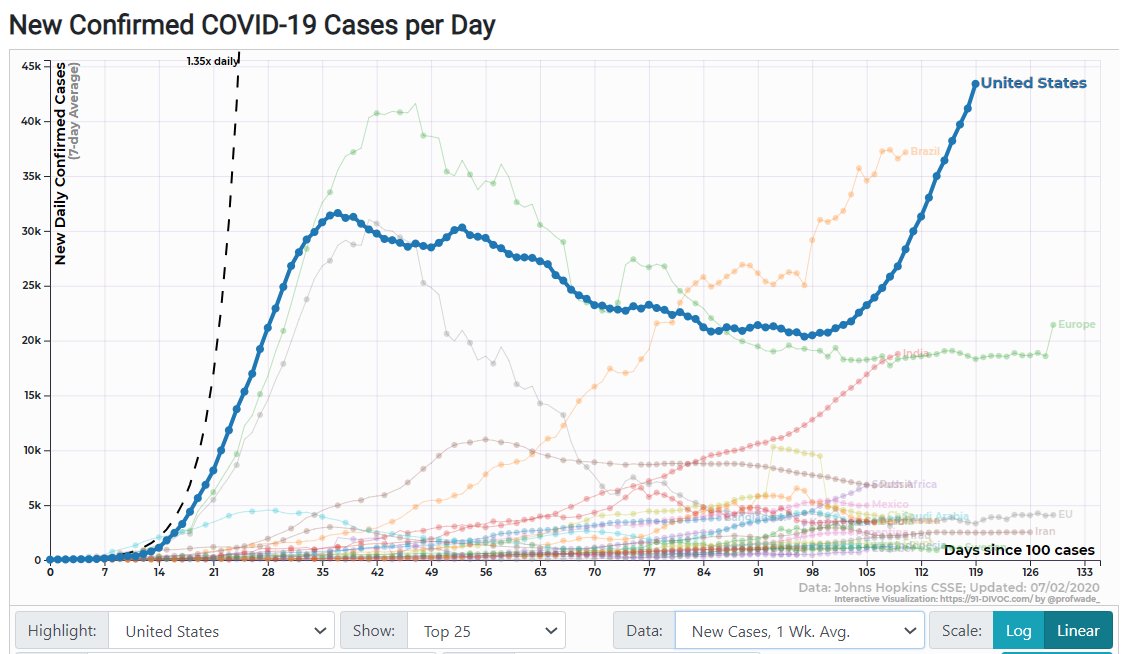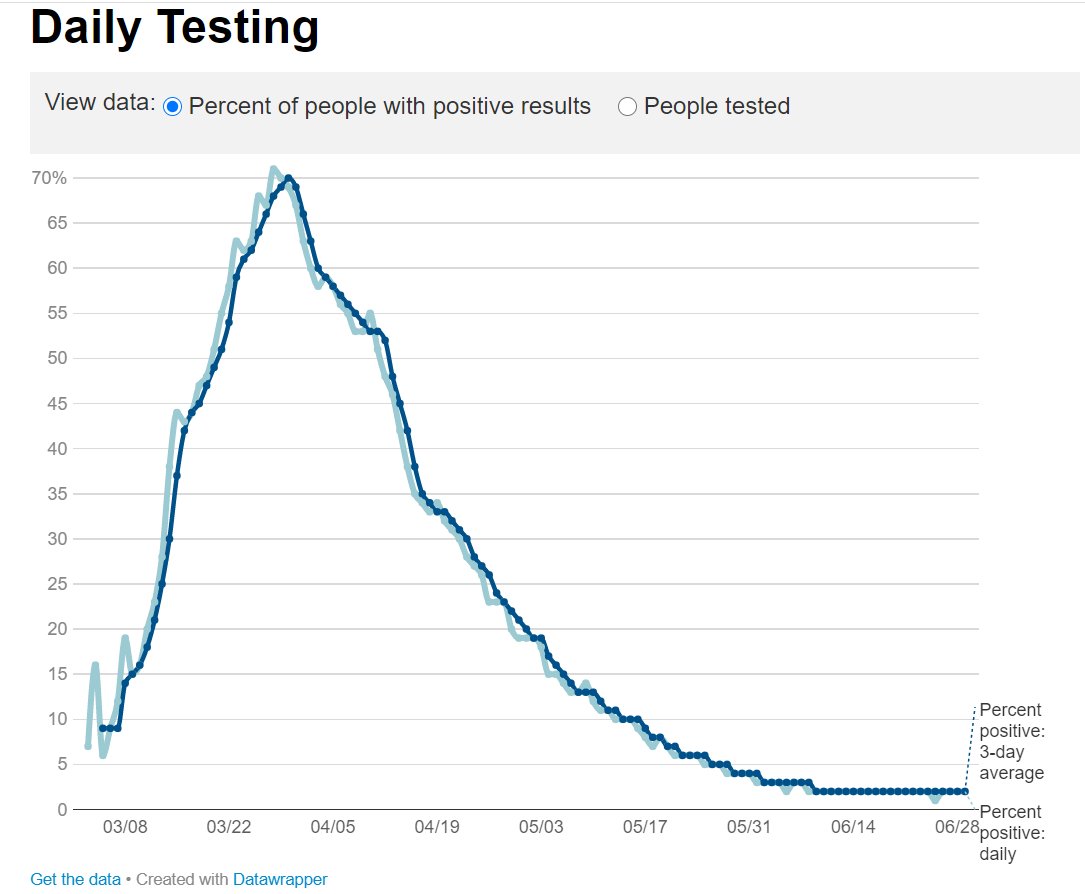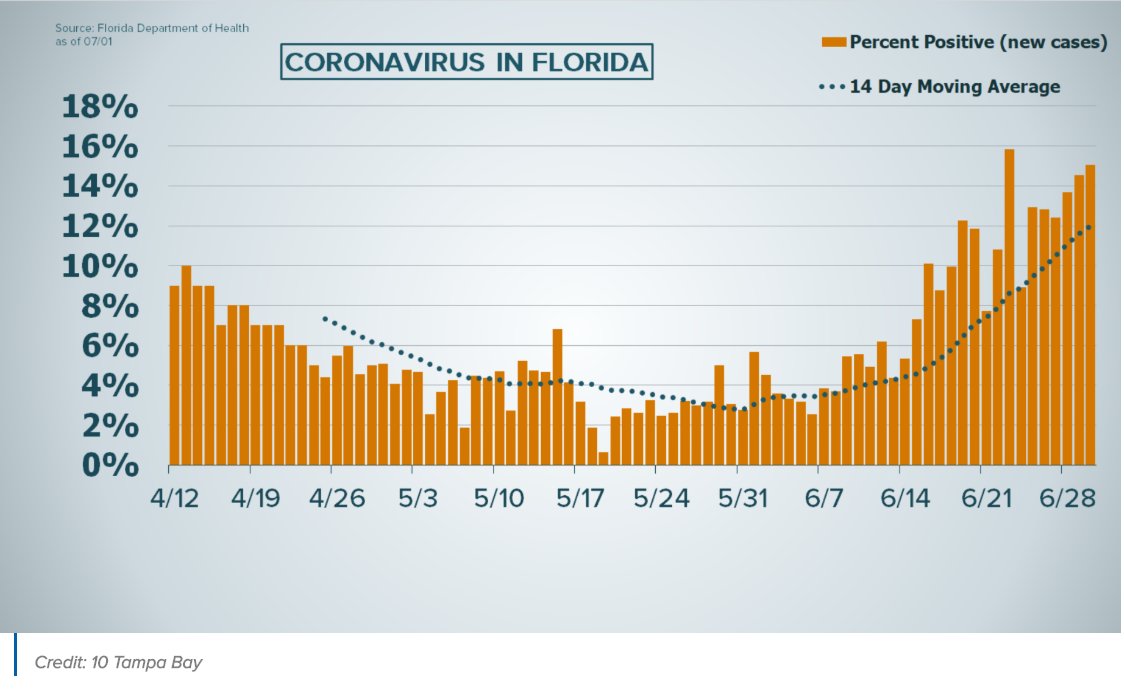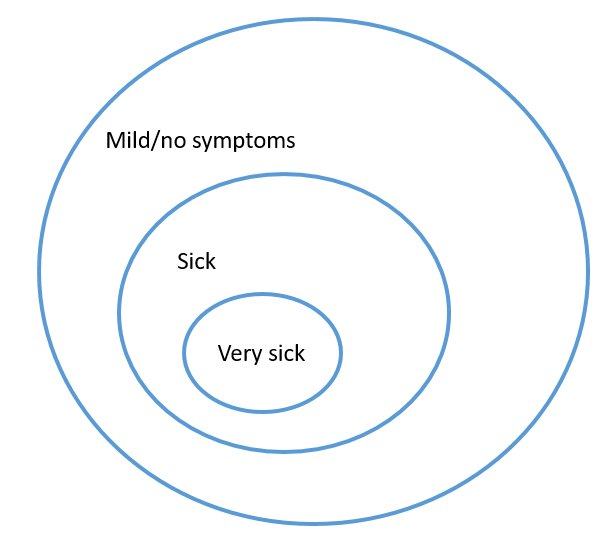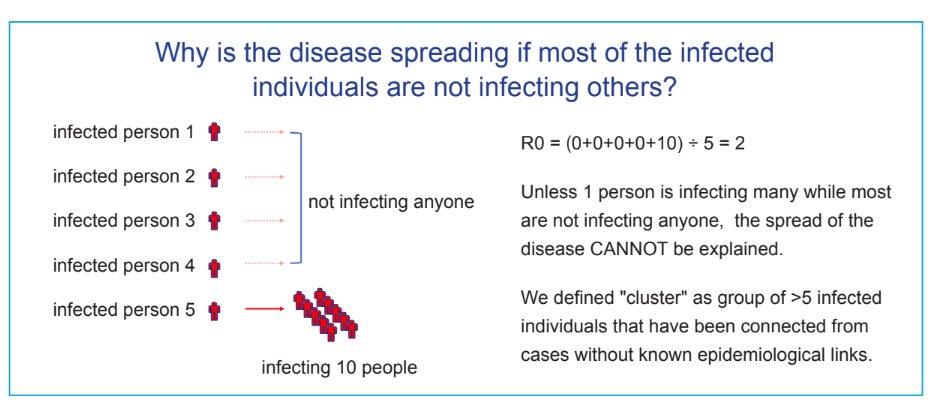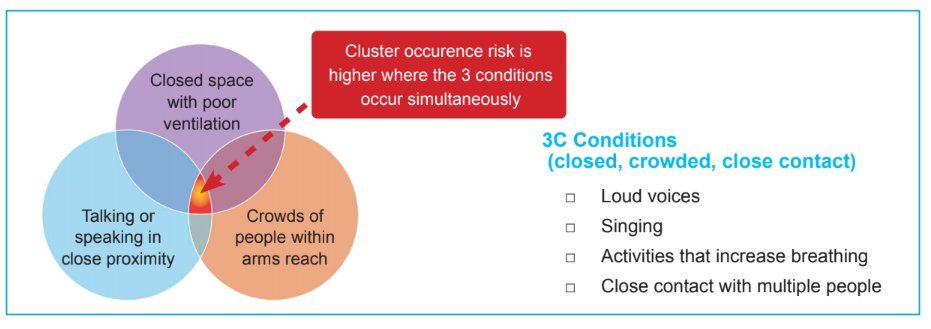(1) Size of the age group (how many people are that age?)
(2) Probability of infection in that age group (how often are you exposed?)
(3) Probability of hospitalization once infected in that age group
Let’s assume everyone is similarly susceptible (though not everyone develops symptoms).
Then this will depend on who is exposed. Who has multiple roommates? Who is riding the subway?
Younger adults generally have more interaction w/ others than older adults. So maybe younger adults are also more likely to be infected?
Without this data, we will assume that this probability of infection is similar across age groups for our little example.
Without a good understanding of how many people are infected, we can’t directly calculate this.
But we can use the data to infer *relative* probabilities.
20% of hospitalizations were in adults 20-44 years of age, versus only 9% in adults over 85 years. Again, I’m ignoring those under 20 (<1% of hospitalizations).
cdc.gov/mmwr/volumes/6…
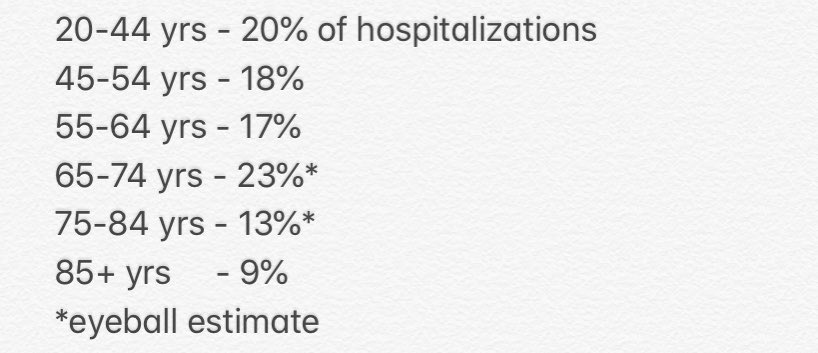
What was striking to me was that we saw so many younger adults hospitalized at all! Hence the accurate conclusion that millennials are not invincible.
statnews.com/2020/03/18/cor…
But I hope it provides a useful tutorial on how we evaluate the data to learn something about the epidemiology. END






